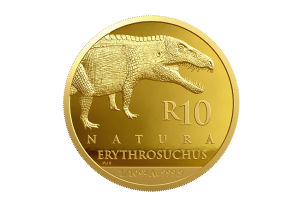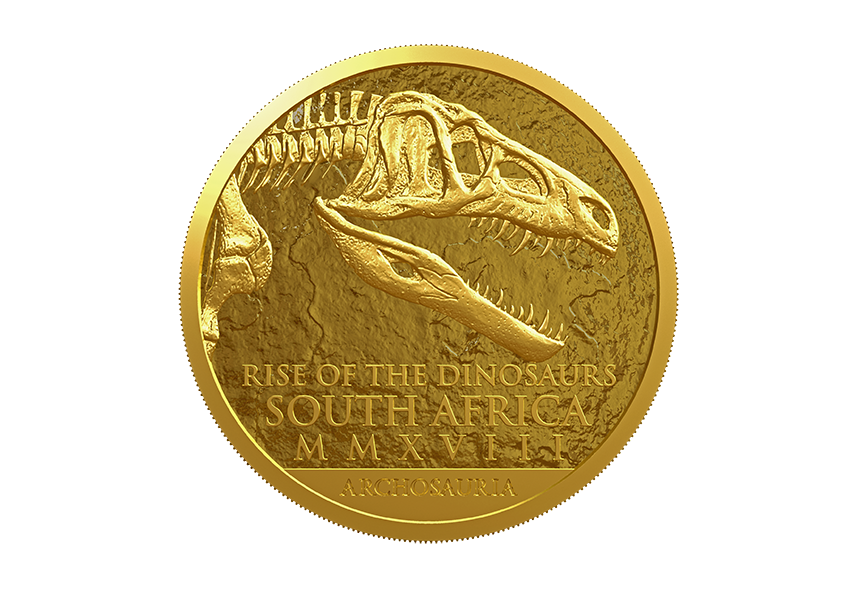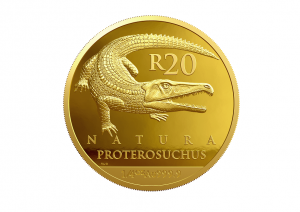A five-coin, 24-karat gold paleontology collection dubbed “Rise of the Dinosaurs” was recently unveiled by the South African Mint, bringing to life the “Archosauria”—crocodiles, pterosaurs, dinosaurs and birds or the ruling reptiles that roamed and soared freely in Southern Africa some 200 million years ago.
The rise of the archosaurs and their evolution is a significant event in the history of life on land since they not only led to the evolution of dinosaurs and birds but also to the pterosaurs (flying reptiles) and crocodiles. Archosaurs are regarded as the direct ancestors of the dinosaurs, and the fossil records from the Karoo Supergroup’s rocks hold the key to understanding their early evolutionary history. Besides the Karoo, many discoveries have been made on the continent and in the country along the borders of KwaZulu-Natal, Free State, Eastern Cape, Western Cape and the Northern Cape. These finds have filled in critical gaps in the evolution of dinosaurs and provided new information about how the southern continents of Africa, South America and India separated.
“South Africa’s rich fossil heritage has been pivotal to unravelling the history of life on the planet,” said Tumi Tsehlo, of the South African Mint. “The fossil finds have turned out to hold a treasure trove of information on life some 200 million years ago. It is a privilege to bring this information to ardent fans of paleontology on coins that will outlast life on earth.”
FIVE-COIN SET
The five-coin set is available in one ounce with a face value of 100 South African rand as well as in fractionals (a half ounce with a face value of 50 rand; a quarter ounce with a face value of 20 rand; a 10th ounce with a face value of 10 rand; and a 20th ounce with a face value of five rand). Each piece depicts a different archosaur, including the Coelophysids; Massospondylus carinatus; Proterosuchidae; Erythrosuchidae; and Euparkeria capensis, all in limited mintages.
Collectors can also acquire a “prestige set,” which contains all five coins and has a mintage of only 100 sets.
All the coins share a common obverse depicting the fossilized skull, neck and shoulder of an Erythrosuchus africanus. The words “Rise of the dinosaurs,” “Archosauria” and the year 2018 as Roman numerals “MMXVIII” complete the design.

The 10-rand coin depicts the Erythrosuchidae, which were Archosauriforms from the late Triassic of South Africa and Namibia.
SCIENTIFIC DESIGN
Noted paleontologist and zoologist Dr. Francois Durand, of the University of Johannesburg, contributed to the design of the coins. His dinosaur renderings appear on all the coins in the series.
“Given the limited mintage, the ‘Rise of the Dinosaurs’ is an exceptional, once-in-a-lifetime acquisition for Afrophiles and those who wish to travel some 200 million years back in time. The coins chronological timeline from the early Jurassic period to late Triassic periods gives the collection continuity and should pique the interest of avid collectors,” said Tsehlo.
“It is crucial to give this unique heritage the attention it deserves and what can be better than coins to preserve the history for posterity. Next year’s Palaeontology Collection will take this evolutionary process further.”
For more information, visit samint.co.za.


